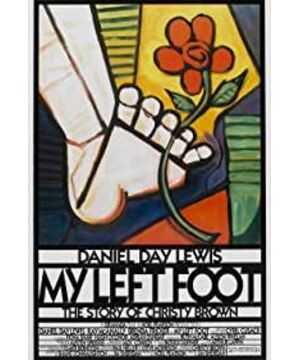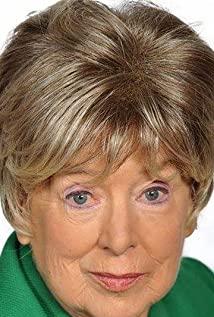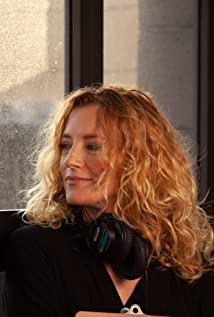Like traditional Hollywood inspirational films, "My Left Foot" inherits the most genre of stories in Oscar-winning works, that is, inspirational films that realize personal dreams and American dreams that change real life. However, in order to adapt to the aesthetic taste of more audiences, movies of the same type naturally seek to win in creativity. The advantage of "My Left Foot" to get a high score lies in its creativity in film script adaptation, story narration, and characterization. . This article aims to analyze the innovation of "My Left Foot" from the screenwriters, directors and actors.
"My Left Foot" is based on Christie Brown's first autobiographical memoir. Christie Brown, who is born with cerebral palsy, has only his left foot in his entire body that can move. The doctor asserted that he had been mentally affected and could not lead a normal life. But Christie's actual actions overturned their conclusions. Under the care of her mother and the extended family, she began to draw symbols on the tattered floor with chalk. Christie wrote the word mother, and the whole family was in tears and moved. Later, after unremitting efforts and persistence, he learned to read and write, cultivated his interest in painting, and after a series of treatments such as doctors' care, he eventually became a painter, poet, and writer. In 1954, he published his first reminiscence autobiography "My Left Foot". His subsequent novels has been published, the "Irish Times" as: "Following the" Ulysses "after the most important works in Ireland."
G
In 1989, Sean ▪ ▪ Connaughton and Jim Sheridan will memoirs adapted for film The script was filmed by Jim Sheridan as a movie. "My Left Foot" was put on the screen. It can be said that the three links from the original novel to the movie script to the creation of the movie reflect the three creativity of the screenwriter, director and actor. Additional.
1. The creativity of the screenwriter
(1) Family affection and love have become the main clues for the development of the film
From the autobiography to the movie script, the screenwriter has captured the important elements of Christie’s ultimate inspirational success, namely, maternal love and family affection. The focus is on restoring Christie’s growth path to the driving role of mother and family, which is why the movie is so touching. Factors, this is constantly being portrayed. But the emotional clues are not limited to family affection, but also the important love when Christie became an adult. Dr. Allen and Nurse Mary’s response to Christie’s admiration directly created the peaks and valleys of his emotional changes. These peaks and valleys are also at The film is constantly intertwined, and the trough means more serious psychological trauma than the body. When resolving the trauma, maternal love and family affection once again stand up as an important driving force for the solution. In the complex autobiographical narrative, there is a lot of content about Christie’s creative philosophy and creative experience. In the process of film script adaptation, in order to better convey the emotional resonance that the screenwriter and director are trying to achieve, they had no choice but to choose emotion. The main clue.
Figure 4 Christie and the two women who were emotionally entangled with him, the final choice can be seen from the arrangement of the pictures.
(2) The transformation of the narrative mode
changed the traditional natural development narrative mode. The screenwriter implemented the cross-narrative technique of memory and reality when adapting. Different from the natural language constructing narrative method of literary works, film language is to convey film language in a limited time and space, so film language is first of all an indicative sign. The screenwriter adapted his autobiographical memoirs into several time and space plots. The duality of the narrative mode prompts the audience to switch between the thinking mode and the situational mode. "The function of film discourse is more dualistic: it not only promotes the construction of narration, but also defines it as a pure film concept."
2. Director's Creativity
(1) Presentation of paintings
As an important manifestation of Christie's success, the display of his paintings is the highlight of the whole movie. From the difficult strokes to the successful paintings with rich shapes, oils and connotations, they all promote the development of the storyline. This point cannot be well demonstrated in a movie script that does not have a sense of image. "With the help of film and the psychological characteristics of the screen, symbols and abstract signs restore the clarity and weight of solid reality for all people." The use of paintings in films is not only an aesthetic display, but also a combination of painters. His creative background has become a symbol of moral education that promotes the development of the film plot. The creation of each painting is accompanied by the sprouting and expression of Christie's inner feelings. Painting has become an important way to convey intentions.
When he confessed to Rachel, the paintings were bright and youthful, reflecting Christie's young heart.
In addition, the painting also provides an entry point for the transformation of the narrative mode. The transition of the mode is the part where the audience follows the camera lens into the painting and fades from the painting to the memory. For example, from the second chapter of the original manuscript, the mother entered the first stage of memory, that is, his childhood life from birth, from the sad painting named "Hell" to a happy childhood life, from his father's life The portrait turned into a memory of his father’s love and his death.
(2) The choice of music The
beginning of the script is that Christie drew out a record of Mozart's "Don Juan", but in the movie he chose Mozart's "Women's Heart", which is also Mozart's comedy. Why didn't the director use it? Follow the original script, but change it to "Women's Heart"?
"Women's Heart" describes the philosopher Alfonso betting with two military officers that their fiancée is not as loyal as they thought. To a certain extent, it reveals the nature of human beings, that is, the heart of love is possessed by everyone, and people do not stop pursuing or accepting love just because they belong to or not. If it is said that "women are all like this", then is it not so for men! Mozart’s "Don Juan" is a typical character in medieval Spain who loves to look for flowers and willows. He is brazen, but brave, witty, and unbelieving; he used his charm to deceive many village girls and ladies, but he He was finally dragged into hell by the ghost; he is essentially a villain, but he has some positive characteristics. It can be seen from this that the director deliberately chose an opera without subjective emotions as the beginning of the introduction. "The Heart of a Woman" more shows the nature of human beings, paving the way for Christie's pursuit of love later, even if a woman has Regarding a date (Mary) or fiance (Aileen), Christie will still desperately try to pursue it. At this point, the director's creativity was condensed, and the foreshadowing was laid.
(3) The omission and adaptation of the final part of the link.
After the new book launch, there is a paragraph in the script:
"Christie signed "My Left Foot" with
his feet . The press is still taking pictures. Christie: The writer has appeared on my feet Muscle cramps.
The driver took a photo with Christie and his family. Christie called Mary and she was standing nearby.
Christie: Mary, please come here. (Mary walks over) Please push me over there.
Mrs. Brown Observe Christie talking to Mary and leave the main crowd. Christie gives her the flowers.
Christie: I'm going to take you home.
Mary: Don't you want to spend the night with your family?
Christie: I have spent the night with my family The past 28 years.
Mary: What would your mother think?
Christie: When I am happy, my mother will be happy."
However, this paragraph did not appear in the movie. It just skipped the farewells of Christie, his mother, and relatives one by one. Although they were very disappointed with each other, they did not say "I have spent the past 28 years with my family". It should be that the director hopes to preserve Christie's indispensable need for maternal love and family affection in the whole movie. So it is only independent in action, and this paragraph is not adopted in language.
Finally, the end of the script:
location, Tomb Pliny, the day
Christie and Mary Jilin Ni overlooking the bay below the cliff overlap.
Christie: Climb one hundred and ninety-six steps to reach the Villa Shaw.
Mary: How do you know?
Christie: I was taken there before.
Location, slopes, morning
early dawn Dublin. Christie and Mary were on the hills in Dublin, observing the dawning view of Dublin. The birds are crying.
Mary: How could you climb the hill before me?
Christie: Every cripple has his own way of walking.
Typewriter:
A foot appeared on the screen and typed with an electric typewriter: "Christie Brown and Mary Carr tied the knot. They lived together until the end of his life in 1981."
But in the movie, they look down at Joyce. The tower, the mountain where the writer Singh was born, did not talk about how to go up the mountain, but a toast to Dublin. Therefore, at the end of the film, the director returned to Irish culture and elevated Christie’s literary and spiritual meaning to the Irish national meaning. It is no longer the only discussion in the script for human beings to break through their own meaning. The perspective is enlarged to a more macro perspective, and the theme is sublimated. .
The last scene of the movie was not typed by an electric typewriter as mentioned in the script, but only subtitles appeared on the screen, aiming to not split the final and complete scene, so that the movie has a smoother and more complete ending. The director changed the position of the electronic typewriter and placed the beginning of the film.
(4) Use of other symbolic images and elements
Some implicit symbolic images and elements in the film are the director's unique creativity. Several small elements are implied in the film to form the clues of the film, and become the object sustenance of the abstract theme. Such as piggy bank, Shakespeare's verses and so on.
A. The scarecrow burned in Halloween symbolizes Christie’s ordeal. When
everyone was happily living Halloween, the camera focused on the burned scarecrow and recorded the process of its arm being burned. In fact, this indicates that Christie will be Face the pain like fire.
B. Wheelchair is Christie’s wish and the goal of the family’s struggle.
Christie went from a simple trolley to a formal wheelchair. Among them, the family saved money from food and frugality. After the small wish from the 17th birthday was fulfilled. It also indicates that Christie's career will eventually come true in the unity and care of a family.
3. The creativity of character portraying
To play Christie requires extremely high acting skills and life experience, a strong enough heart, character portrayal ability, and unremitting efforts and hard work. The famous film actor Daniel Day Louise who played Christie won the Oscar for Best Actor for this film in 1990. He is a dual citizen of Britain and Ireland and has a strong sense of identity with Christie. Since he was half Jewish in school when he was young, he was always isolated by his partners, so he was used to being alone, self-regulation learned to be strong in his heart, which is very similar to his role Christie. With his outstanding acting skills, Louis later won the 2008 Oscar for Best Actor and 2013 Oscar for Best Actor in "The Blood Is Coming" and "Lincoln", creating miracles in film history. The creative film scripts and film images of film actors' acting skills are an important carrier for the final formation. The creativity of each link ultimately depends on the excellent acting skills of the actors to be perfectly displayed and accepted by the audience.
View more about My Left Foot reviews











